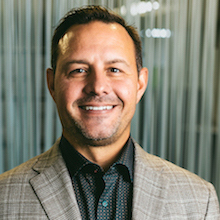It is clear in the next decade there will be a series of innovations that change the complexity of the world as we know it today. These include the rapid commercialization of the internet of things, artificial intelligence, web3, virtual reality, the metaverse, blockchain, quantum computing, haptics, and 6G just to name a few. There will also be transitions from technology that we have grown to love such as smart phones and smart televisions to things that may initially sound frightening, such as digital patches and neurolinks.
But what does this mean for security professionals? What risks and resources will each of these bring? Should we be doing things like AI Audits? Answering these questions and reducing the potential unknowns could easily be the difference in success or professional obsolescence.
In order to make these forecasts out to a 10-year horizon, it takes expertise in the subject matter, an understanding of Humalogy® the ability to incorporate High Beam thinking, the use of strategic forecasting techniques, creative collaboration tools, and dedicated groups working together.
All of our organizations, our families, our friends, and our professional networks will be looking to us as professionals to have answers during these somewhat stressful socio-technological transitions.
For example, there is a general fear by security experts of the “quantum apocalypse” – or the time that quantum computers will be able to break encryption protocols. In anticipation of this possibility, bad actors are already stealing and storing encrypted files in an effort to wait until the files can be decrypted using this technology. Understanding the ramifications of a loss of data security (and therefore privacy) will be important as this approaches.
Or what happens when 6G is available. Keep in mind that 4G technology could support 100K devices per square km – 5G can support 1 million per square km and 6G will support 10 million devices per sq km. 6G will likely become commercialized around 2030. Over the next 7 years there will inevitably be many changes in networked devices, the ability to control these devices, the data, the derived data from the AI that will be needed to manage them, and we will need to incorporate quantum computing to deal with all of the computing power needed. The quantum alone will require new infrastructure as the current fiber optics are not set up for this.
The good news is that there are options to practice these forecasting skills. While many of us research and develop our own Rivers of Information® to stay as up to date with the news as possible, there are also opportunities to participate in fast paced ThinkTanks with colleagues and using customized tools to capture the various lines of thinking about the future and create a series of likely futures.
One of these options is quickly approaching and is FPOV’s Security ThinkTank. The 2023 event will consist of 4 ThinkSprints (AI, Security Organizations, Quantum Computing, Security Budgeting and Financing) and will look at each of these through a 10 year lens. We do these a few times a year on different topics to create value for all of the participants. The participants will receive a post event report that highlights the various ideas that were developed and can be used to begin planning for those possible futures now.
Join us for FPOV’s 2023 Virtual Security Think Tank, titled TechnoStorm, on May 3-4, where we will use severe weather to help understand what some of these innovations may mean and how to address the potential risks. We look forward to collaborating with you then!
Sign Up For Our Articles
"*" indicates required fields

About the Author
Hart Brown is the CEO of Future Point of View and the Security and Risk Practice Lead. He is a widely known expert and trusted advisor in the governance of risk and resilience with over 20 years of experience across a broad spectrum of organizations in both the public and private sectors. He is a Certified Ethical Hacker and a Qualified Risk Director. Learn more about Hart Brown.

